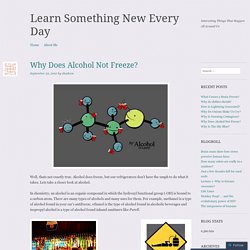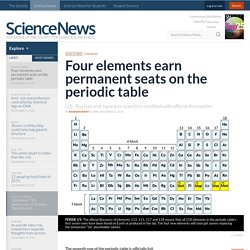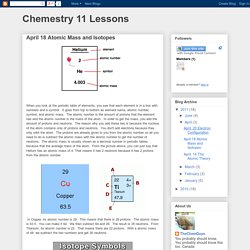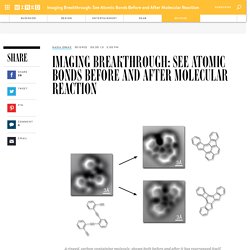

Learn Something New Every Day. Well, thats not exactly true.

Alcohol does freeze, but our refrigerators don’t have the umph to do what it takes. Lets take a closer look at alcohol. In chemistry, an alcohol is an organic compound in which the hydroxyl functional group (-OH) is bound to a carbon atom. There are many types of alcohols and many uses for them. For example, methanol is a type of alcohol found in your car’s antifreeze, ethanol is the type of alcohol found in alcoholic beverages and isopropyl alcohol is a type of alcohol found inhand sanitizers like Purell.
Freezing points of different substances are influenced by the strengths of intermolecular bonds. The exact freezing point of vodka, gin, tequila, rum, whiskey and other liqueurs is dependent on their proof, or alcohol per volume. Since most household refrigerators are kept between -10 and 0 °F (-23 and -18 °C), we never get to see frozen alcohol. What do you guys think? Sources Used- Like this: Like Loading... Four elements earn permanent seats on the periodic table. The seventh row of the periodic table is officially full.

On December 30, the International Union of Pure and Applied Chemistry announced that a Russian-U.S. collaboration had attained sufficient evidence to claim the discovery of elements 115, 117 and 118. IUPAC awarded credit for the discovery of element 113 to scientists at RIKEN in Wako, Japan (SN Online: 9/27/12). Both groups synthesized the elements by slamming lighter nuclei into each other and tracking the decay of the radioactive superheavy elements that followed.
Researchers at the Joint Institute for Nuclear Research in Dubna, Russia, and Lawrence Livermore National Laboratory in California, which are among the institutions credited with elements 115, 117 and 118, had also laid claim to element 113 after experiments in 2004 (SN: 2/7/04, p. 84) and 2007. Chemestry 11 Lessons: April 18 Atomic Mass and Isotopes. When you look at the periodic table of elements, you see that each element is in a box with numbers and a symbol.

Microscope work wins Nobel Prize. 8 October 2014Last updated at 05:57 ET The technique has extended the resolution of light microscopes.

Element Collector - Periodic Table of Videos. Imaging Breakthrough: See Atomic Bonds Before and After Molecular Reaction - Wired Science. For the first time, scientists have visually captured a molecule at single-atom resolution in the act of rearranging its bonds.

The images look startlingly similar to the stick diagrams in chemistry textbooks. Until now, scientists were only able to infer molecular structures. Using atomic force microscopy, the individual atomic bonds — each a few ten-millionths of a millimeter long — that connect the carbon molecule’s 26 carbon and 14 hydrogen atoms are clearly visible. The results are reported online May 30 in Science. The team initially set out to precisely assemble nanostructures made from graphene, a single-layer material in which carbon atoms are arranged in repeating, hexagonal patterns.
To document the graphene recipe, Fischer needed a powerful imaging device, and he turned to the atomic force microscope housed in physicist Michael Crommie’s UC Berkeley lab. The First Images of Molecules Breaking and Reforming Chemical Bonds. That question has been answered a long time ago.

The Simplest Periodic Table We've Ever Seen. The NEW Periodic Table Song (In Order) Meet 115, the Newest Element on the Periodic Table. If you've learned all the elements from actinium to zirconium, it's time to head back to the periodic table, where there's a new, extremely heavy element in town.

The new element doesn't have an official name yet, so scientists are calling it ununpentium, based on the Latin and Greek words for its atomic number, 115. (Related: Read a feature on element hunters in National Geographic magazine.) In case you forgot your high school chemistry, here's a quick refresher: An element's atomic number is the number of protons it contains in its nucleus.
The heaviest element in nature is uranium, which has 92 protons. But heavier elements-which have more protons in their nucleus-can be created through nuclear fusion. The man-made 115 was first created by Russian scientists in Dubna about ten years ago. MIT Creates ‘Plug-and-Play’ CO2 Scrubber for Existing Power Plants. MIT researchers have invented a “plug-and-play” carbon dioxide scrubbing system that they say could be added relatively easily to any existing power plant, and uses less power than existing systems.

Most existing systems rely on complex plumbing to divert the steam used to drive the turbines that generate power in these plants. Such systems are not practical as retrofits to existing plants, MIT says. By contrast, the MIT system requires no steam connection and can operate at lower temperatures than other scrubbing technology. The new electrochemical CO2 scrubber system is described in a paper published online in the journal Energy and Environmental Science, written by doctoral student Michael Stern, chemical engineering professor T. Alan Hatton and two others. Microscope Images. Liquid Oxygen (slow motion) - Periodic Table of Videos. Water And Sunlight The Formula For Sustainable Fuel.